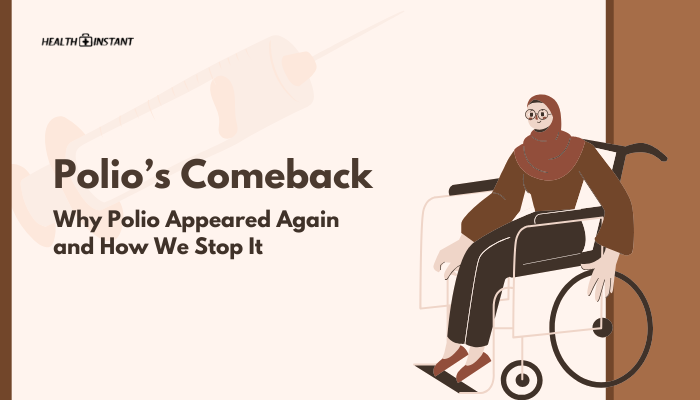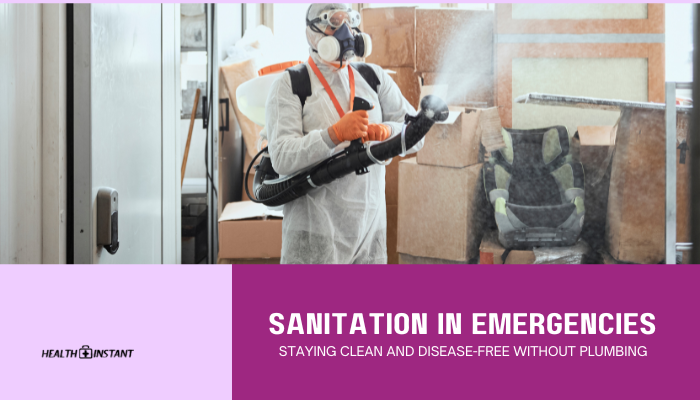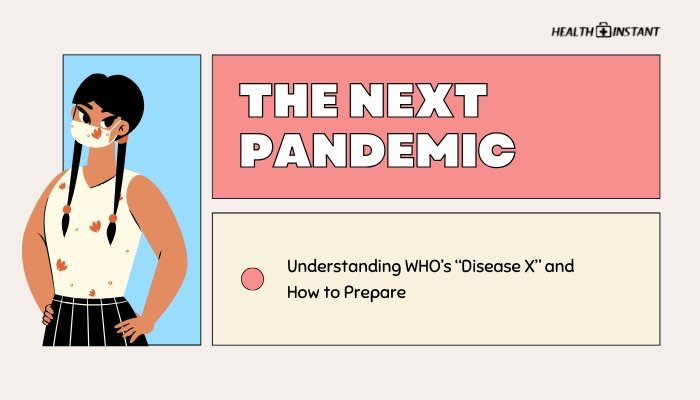Introduction
Polio, once a leading cause of disability, seemed close to eradication thanks to global vaccination campaigns. However, recent reports of new cases and circulating vaccine-derived strains have shocked health experts. These developments illustrate how fragile victories can be when immunization coverage wanes or when regional conflicts and misinformation weaken public health efforts.
In the 1950s, the polio vaccine rollout drastically reduced polio paralysis worldwide, leading to the near-elimination of wild poliovirus in most regions. But the pathogen still lingers in a few pockets—mainly in parts of Afghanistan and Pakistan—while outbreaks of vaccine-derived polio occasionally appear elsewhere.
This article delves into the biology of polio, explains why we are seeing fresh cases, and outlines the collaborative strategies necessary to push polio back to the brink of extinction. While challenges remain, renewed focus and strong community engagement can secure a polio-free future for all.
Understanding Polio: A Quick Overview
Poliomyelitis (polio) is a highly infectious viral disease caused by the poliovirus, a member of the enterovirus group. It spreads primarily through the fecal-oral route—often via contaminated water, food, or surfaces. While many infected individuals show no symptoms, others experience fever, headache, or body aches.
In severe cases, polio attacks the central nervous system, leading to irreversible paralysis, especially in the legs. Children under five years old are most susceptible to paralytic polio, which can result in lifelong disability or even death if respiratory muscles become involved.
Key points to note:
- Transmission: Fecal-oral route, often in areas with poor sanitation.
- Paralysis: Less than 1% of infections cause permanent paralysis.
- Post-Polio Syndrome: Survivors may face new muscle weakness decades after recovery.
Effective vaccines—both oral and injectable—stand as the central weapon to prevent polio. High vaccination coverage in communities interrupts virus transmission and leads to disease elimination in entire populations.
Progress Made: A Near Eradication
In 1988, the World Health Assembly launched the Global Polio Eradication Initiative (GPEI), drawing on successes from regional vaccination campaigns. At that time, polio paralyzed over 350,000 children annually in more than 125 countries.
Thanks to coordinated efforts by national governments, the World Health Organization (WHO), Rotary International, the US Centers for Disease Control and Prevention (CDC), UNICEF, and later the Bill & Melinda Gates Foundation, polio cases plunged dramatically.
Achievements include:
- Africa’s Historic Milestone (2020): WHO declared the African region free of wild polio after four consecutive years without new wild poliovirus cases.
- Decline in Endemic Countries: Afghanistan and Pakistan remain the only countries with continuous wild polio transmission, drastically reducing overall cases but facing pockets of persistent spread.
Overall, the global incidence of polio dropped by more than 99%, preventing millions of children from paralysis. Yet, maintaining that success remains an ongoing endeavor as polio hunts for the smallest immunization gaps to resurface.
The Recent Comeback: Where and Why
In recent years, polio’s resurgence has appeared in two main forms: new outbreaks of wild poliovirus in endemic areas and the emergence of vaccine-derived poliovirus (VDPV) in regions once declared polio-free. This phenomenon often results from a combination of factors:
Vaccine-Derived Poliovirus (VDPV)
Live attenuated strains in the Oral Polio Vaccine (OPV) can mutate over time if they circulate among underimmunized populations. In extremely rare instances, these mutated strains regain virulence, leading to outbreak clusters. Communities with subpar vaccination coverage allow these vaccine-derived variants to spread similarly to wild poliovirus.
Low Immunization Coverage
Any drop in routine vaccinations or postponed mass immunization campaigns—due to conflict, misinformation, or health budget constraints—opens pockets of unprotected children. Even if polio incidence had vanished for decades, the virus can re-establish itself when vulnerabilities appear.
Conflict and Migration
Areas ravaged by conflict or displacement can see health infrastructure collapse, blocking vaccine access. Refugees fleeing these zones might carry the virus across borders, sparking polio’s return in neighboring countries. Without strong surveillance or robust immunization among host communities, polio can silently circulate before detection.
Symptoms and Long-Term Effects
The majority of polio infections (about 72%) remain asymptomatic, yet still enable virus transmission. Another subset develops mild, flu-like signs:
- Fever
- Fatigue
- Sore Throat
- Stomach Pain
However, less than 1% of polio cases develop acute flaccid paralysis. Early indicators include back stiffness, severe muscle pain, and partial paralysis in the legs. Progression can lead to total limb immobility, requiring long-term physical therapy. Some survivors experience “post-polio syndrome” decades later, experiencing renewed weakness or muscle wasting.
The risk of death arises if breathing muscles are paralyzed. In the mid-20th century, “iron lungs” assisted respiration for severely affected patients. While better supportive techniques exist today, the moral remains that any polio case can be life-altering.
Diagnostic Methods and Surveillance
Effective polio control hinges on robust surveillance. Typically, healthcare workers look for acute flaccid paralysis (AFP) in children and collect stool samples for testing in specialized laboratories. Genetic sequencing of viruses isolates helps differentiate wild poliovirus from vaccine-derived strains. Alongside environmental surveillance—testing sewage systems for traces of the virus—public health agencies spot silent transmission before clinical cases appear.
- AFP Surveillance: Periodic reporting of any child with sudden flaccid paralysis.
- Lab Network: The GPEI fosters a global chain of accredited labs to confirm polio presence swiftly.
- Rapid Response: Once a case is flagged, outbreak response tasks—contact tracing, immunization drives—begin immediately.
Vaccines: The Main Tools to Defeat Polio
Oral Polio Vaccine (OPV)
Developed by Albert Sabin, the Oral Polio Vaccine (OPV) uses a live-attenuated virus. It is inexpensive, easy to administer, and induces robust gut immunity, halting infection at its source. However, under certain conditions, OPV can mutate into circulating vaccine-derived polioviruses if population coverage remains low, leading to occasional outbreaks.
Inactivated Polio Vaccine (IPV)
Invented by Jonas Salk, the Inactivated Polio Vaccine (IPV) contains a killed virus administered via injection. IPV confers strong individual protection, reducing paralysis risk, but is less effective at blocking intestinal infection or transmission. Developed nations commonly adopt IPV-based schedules, sometimes in combination with OPV to optimize coverage.
Recent Innovations
New formulations—like the novel Oral Polio Vaccine type 2 (nOPV2)— aim to retain OPV’s affordability and gut immunity while curbing reversion risk. Trials indicate nOPV2 might reduce VDPV, but widespread adoption is still in progress. Combining IPV for prime individual protection with carefully targeted OPV campaigns forms a balanced strategy.
Strategies for Stopping Polio’s Return
Strengthening Routine Immunization
Polio eradication aligns with broader immunization goals. National health systems delivering consistent childhood vaccines guard entire communities. This means:
- Free Polio Drops at public clinics or integrated outreach events.
- Door-to-Door Vaccination in marginalized pockets.
- Addressing Misinformation to build trust among hesitant families.
Swift Outbreak Response
When a polio case surfaces, “firefighting” measures begin:
- Supplementary Immunization Activities (SIAs): Rapid, localized OPV campaigns to vaccinate all children under five in high-risk areas.
- Enhanced Surveillance: Doubling down on AFP detection, environmental sampling, and lab analyses.
- Cross-Border Coordination: Countries link efforts at shared frontiers.
Community Engagement and Education
Effective polio campaigns rely on local buy-in. Partnerships with religious leaders, cultural influencers, and volunteer networks foster acceptance of immunization. Public messaging in local dialects, delivered via radio or house visits, counters rumors—like claims that vaccines cause infertility or harbor hidden agendas.
Global Collaboration and Funding
Organizations like Gavi, the Vaccine Alliance, Rotary International, and the Bill & Melinda Gates Foundation supply vital resources. Sustained political commitment ensures polio eradication remains a priority. High-level support can address obstacles: ensuring safe access to conflict areas, financing outbreak responses, and investing in next-generation vaccines.
Challenges and Ongoing Research
Despite the near eradication, obstacles persist:
- Regions of Insecurity: Taliban-held areas in Afghanistan or tribal zones in Pakistan hamper vaccination teams. Conflicts in other regions similarly hamper access.
- Vaccine Hesitancy: Misinformation, cultural sensitivities, or historical distrust of healthcare authorities hamper campaigns.
- Vaccine-Derived Strains: The interplay between OPV’s benefits and reversion risk sparks debates.
- Sustainability: Funding shortfalls can slow immunization drives or hamper robust surveillance systems.
New research explores improved diagnostic kits, advanced immunization schedules combining IPV and OPV, or new variants of OPV that are more genetically stable. Partnerships with technology companies are also exploring digital contact tracing or real-time data to track coverage.
How Individuals Can Help
If you live in a region with routine polio vaccination:
- Ensure Vaccines for Kids: Follow your national immunization schedule, keeping records updated.
- Educate Others: Share factual information about vaccine safety and polio’s seriousness.
- Support Campaigns: Even if your area is polio-free, volunteering or donating to polio drives can assist global eradication.
- Check Travel Advisories: If traveling to regions with polio presence, confirm your polio booster or current vaccination status.
Local communities ultimately determine polio’s fate. By endorsing immunization and encouraging neighbors to do the same, you aid efforts to keep polio from regaining ground.
Conclusion
Polio’s resurgence in certain locations reminds us that no disease is truly defeated until it is gone everywhere. For polio, the final mile can be the hardest. Vaccine-derived strains highlight the complexity of using live vaccines in underimmunized settings, while ongoing conflicts hamper progress in the last few endemic strongholds.
Yet, the tools to end polio exist: well-established vaccines, proven outbreak responses, and decades of experience from global alliances.
To secure a polio-free world, communities and leaders must remain vigilant, ensuring robust immunization routines and swift interventions. Proper funding, cross-border cooperation, and attention to local sensitivities enable campaigns to break transmissions once they arise.
If we maintain momentum—strengthening local health systems and educating parents—the “comeback” of polio becomes a short-lived hiccup, and full eradication remains within reach. Once polio is finally gone, future generations will be liberated from the risk of this ancient disease.
References
- Global Polio Eradication Initiative. (2021). Polio eradication strategy 2022–2026. WHO.
- World Health Organization. (2021). Polio weekly epidemiological record. WHO.
- Centers for Disease Control and Prevention. (2022). Vaccine-derived poliovirus. CDC.
- GPEI. (2022). Afghanistan and Pakistan: The final hurdles to polio eradication.
- O’Reilly KM, Durry E, ul Islam O, et al. (2018). Pakistan’s polio vaccination challenges. Vaccine. 36(35):5219–5224.
- Hsu CH, et al. (2019). Vaccine-associated paralytic poliomyelitis and vaccine-derived polioviruses. Lancet Infect Dis. 19(3):e101–e108.
- Jorba J, Diop OM, Iber J, Henderson E. (2020). Update on vaccine-derived polioviruses. J Infect Dis. 221(4):415–418.
- Kew OM, et al. (2005). Vaccine-derived polioviruses and the endgame strategy for global polio eradication. Annu Rev Microbiol. 59:587–635.
- GAVI Alliance. (2021). The global rollout of inactivated polio vaccine.
- WHO. (2022). Fighting polio in conflict-affected areas.



